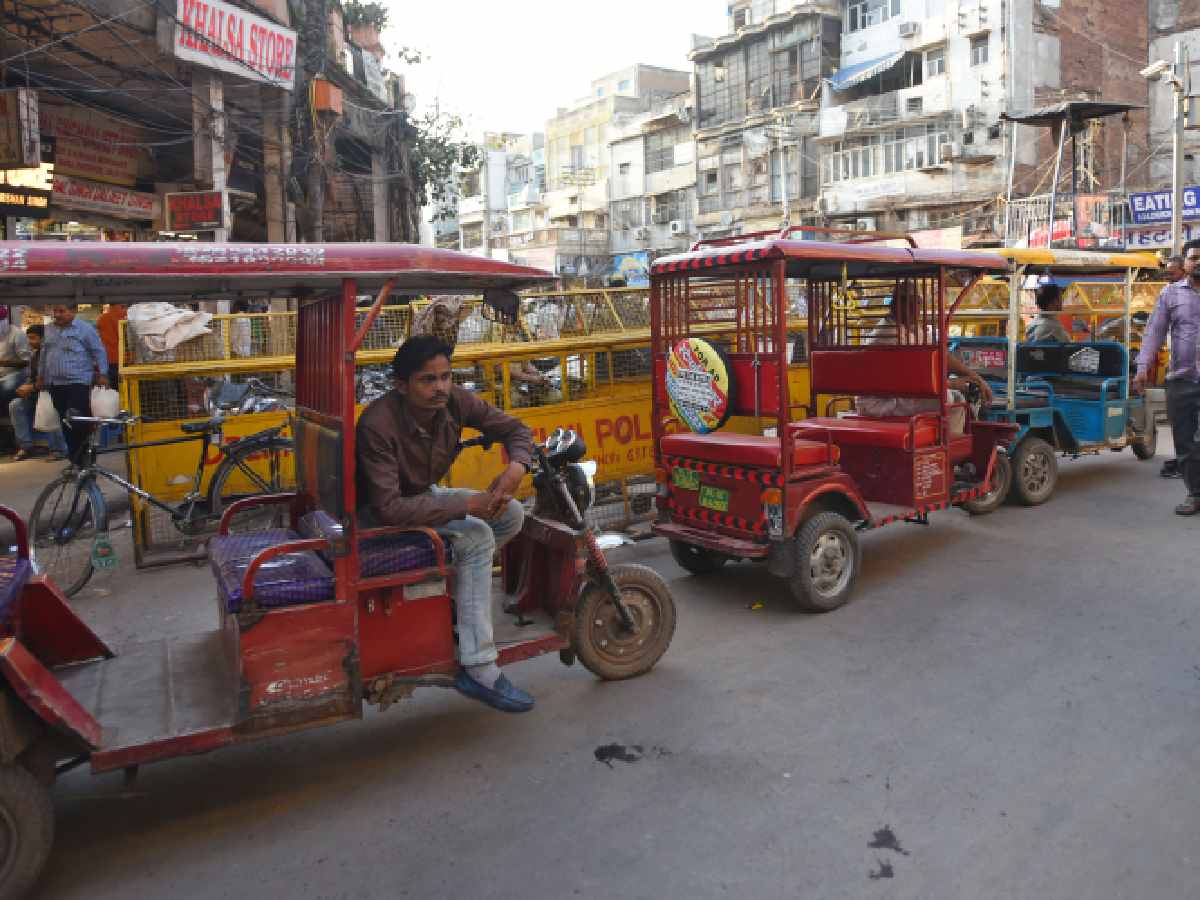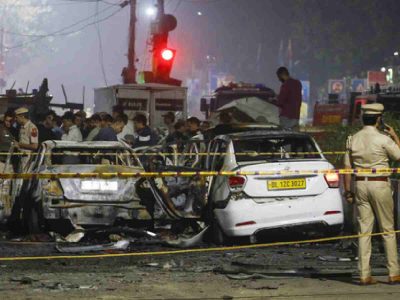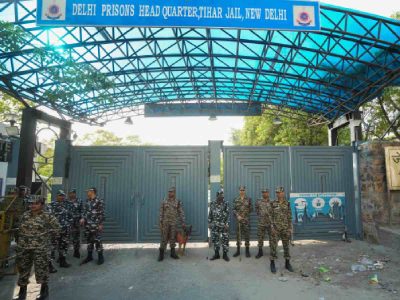Scores of lives have been lost to electrocution and short circuits linked to more than 5,000 unauthorised electric vehicle (EV) charging stations spread across the national capital, exposing a growing and deeply concerning public safety crisis.
As the Delhi government continues to champion its ambitious push for electric mobility, the proliferation of these illegal setups presents a dangerous contradiction — one that underscores the urgent need for regulatory enforcement, infrastructure planning, and public accountability in the city’s green transition.
In the past two months alone, five people — including two men, two teenagers and a woman — have died in separate incidents at these unauthorised charging stations, while more than nine others have been injured.
According to highly placed sources in the discoms, around 200 e-rickshaw charging locations, with a load of about three megawatt (MW), are booked for electricity theft annually in Delhi. Despite this, the situation on the ground remains grim.
All three discoms operational in the capital — BSES Rajdhani Power Limited (BRPL), BSES Yamuna Power Limited (BYPL), and Tata Power Delhi Distribution Limited (TPDDL) — have regularly booked these stations, official sources said.
Huge safety hazard
Sources informed that the e-rickshaws themselves are not inherently dangerous; however, their illegal charging through power theft and the use of sub-standard batteries pose major safety risks.
“Exposed electricity wires left open during illegal charging and non-adherence to safety standards often cause sparks and short circuits. These exposed live wires also pose a danger to the public, especially children playing in these areas during the daytime. Such open wires have led to electrocutions in the past,” they said.
“Large-scale illegal charging of e-rickshaws at single, unplanned locations can also lead to stress on existing networks, causing possible breakdowns and voltage issues, inconveniencing other consumers in the area. The solution to avoid such fatalities is to take legal connections and use good-quality batteries,” they asserted.
E-rickshaws have quickly become a common sight on Delhi’s streets, with the city estimated to have around 1.6 lakh such vehicles — though only about 50,000 are registered.
Sources added, “While they are an eco-friendly mode of transportation, a dark underbelly exists: power theft and safety hazards. This is a new kind of power theft being witnessed today.”
60% e-rickshaws involved in power theft
It is estimated that over 60% of e-rickshaws in Delhi are involved in power theft, resulting in a loss of 15–20 MW across the city — translating to an annual loss of around Rs 120 crore, according to discom sources.
In 2002, Delhi’s Aggregate Technical and Commercial (AT&C) losses were over 55%, reaching up to 63% in some areas, largely due to power theft. Today, Delhi’s AT&C losses stand at about 6%, placing the city among the world’s best-performing discoms.
But this new form of theft — illegal charging stations — is now a serious threat to public safety.
Areas with high e-rickshaw power theft
Illegal EV charging and rampant power theft by e-rickshaws have become persistent and dangerous problems across Delhi. These makeshift charging stations, often operating without basic safety measures or official approval, expose commuters and residents to serious risks of electrocution, short circuits, and fires.
In East and Central Delhi, neighbourhoods such as Mandawali, Minto Road, Seelampur, Yamuna Vihar, Shastri Park, Karawal Nagar, Mustafabad, Nand Nagri, Karol Bagh, Keekarwala (Patel Nagar), and Jama Masjid have emerged as high-risk zones.
Mohammad Salim, 36, an e-rickshaw driver from Seelampur, said, “I’ve been driving an e-rickshaw for nearly five years now, and not once have I found a government charging station nearby that actually works or has space. Every night, I take my rickshaw to an open ground where dozens of others are lined up. We all know it’s an illegal setup — the wires are hanging loose, the power is stolen, and there have been short circuits before.”
He added that he has no place to charge safely. “If I don’t charge at night, I can’t work the next day. It’s risky, yes, but it’s my livelihood.”
Also Read: Limited charging points, rising costs leave e-rickshaw drivers helpless
Rafiq Ansari, 29, a driver from Mustafabad, said, “Sometimes I stand and watch the wires spark or burn slightly, and still I go ahead and connect my rickshaw. I have no choice. I don’t have the money or the connections to set up my own charging point. And the authorities don’t care. If something goes wrong — if there’s a fire or someone gets electrocuted — they’ll blame us.”
He added that these setups are run by powerful local figures. “If you say no to them, they’ll throw you out — then where will you go?”
South Delhi is no exception. Sangam Vihar, Jamia, Batla House, Kalkaji, Tughlakabad, Sarai Kale Khan, Dakshinpuri, and Govind Puri all witness frequent instances of unregulated charging. Electricity is often siphoned directly from street poles or household meters using low-grade wiring, increasing the risk of fires and fatal shocks.
In West Delhi, areas such as Raghubir Nagar, Tagore Garden, East Sagarpur, Madipur, Nangloi, Paschim Vihar, Matiyala, and Mahavir Enclave are hubs for this illicit activity. Despite complaints from residents and shopkeepers, enforcement remains weak.
Suresh Kumar, 42, from Madipur, said, “Every night, I pay Rs 250 to park and charge my rickshaw in a lot behind the market. The people running it steal electricity and bribe officials to look the other way. The government keeps telling us to switch to electric, but they haven’t created any space for us to charge safely or affordably.”
Even in North Delhi, where regulatory oversight is expected to be tighter, areas like Keshavpuram, Civil Lines, Mukherjee Nagar, Rohini, Bawana, and Narela are not immune to the issue.
As of 2022, Delhi has 2,452 public and semi-public EV charging points across 1,919 locations. While the government cites an EV-to-public charger ratio of 25:1, the actual figure is likely much higher due to unregistered vehicles.
How these illegal charging stations operate
Official sources said that many of these setups are part of an organised network run by local strongmen or mafias.
The operations usually run in night-time batches, with each charging session lasting six to seven hours. “E-rickshaw drivers are charged a daily fee of Rs 200–Rs 300 per vehicle for access to these unauthorised ‘parking and charging’ hubs,” sources said.
These sites are often established on encroached public lands owned by the Delhi Development Authority (DDA), municipal bodies, or even the Archaeological Department. Electricity is stolen by tapping into low-voltage mains using poor-quality wiring, creating serious risks.
“In some cases, local mafias own fleets of e-rickshaws themselves and rent them out along with bundled charging services,” sources added.
What discoms are doing
Discom officials stated that several steps have been taken to address the issue. “Around 4,000 legal e-rickshaw connections have been given to individuals or charge operators, each capable of handling multiple vehicles. Reliable and safe power is provided through dedicated EV charging hubs,” an official said.
Other steps include the conversion of low-tension aerial cables to armoured ones, installation of prodigy meters, network securitisation, night surveillance, and awareness campaigns.
The Delhi Electricity Regulatory Commission (DERC) has also introduced a special tariff of Rs 4.5 per unit for e-rickshaw charging to incentivise legal connections.
However, land availability remains a major hurdle. “Discoms are not land-owning agencies. They depend on MCD, DDA, and the Flood Department to provide space for legal charging stations,” the official said.
He added, “A coordinated approach involving land-owning agencies, the transport department, urban authorities, DERC, discoms, and e-rickshaw unions is critical to addressing these challenges.”
Delhi government’s plan
The Delhi government has unveiled a roadmap to expand the city’s EV charging infrastructure under its EV Policy 2.0. The plan aims to transform Delhi into a cleaner, greener, and more liveable city with widespread access to charging facilities.
A senior Delhi government official said the plan includes establishing at least one public charging station every five kilometres. The goal is to increase the number of charging points to 3,500 by 2025, and scale up to 13,700 by 2030.
To implement this, the Transport Department will draw up zone-wise plans and use underutilised public land — including space beneath flyovers, parking lots, and telecom tower areas — to install chargers.
Private and semi-public entities such as malls, offices, hospitals, and government institutions will be incentivised through subsidies: 50% (up to Rs 2,500) for the first 15,000 slow AC chargers, and Rs 20,000 per unit for the first 2,000 fast DC chargers.
Patriot reached out to the authorities concerned, including the Delhi Government, Municipal Corporation of Delhi (MCD) and DDA. However, no comment was received at the time the paper went to the press. The online version of the story will be updated as and when Patriot receives their response.





